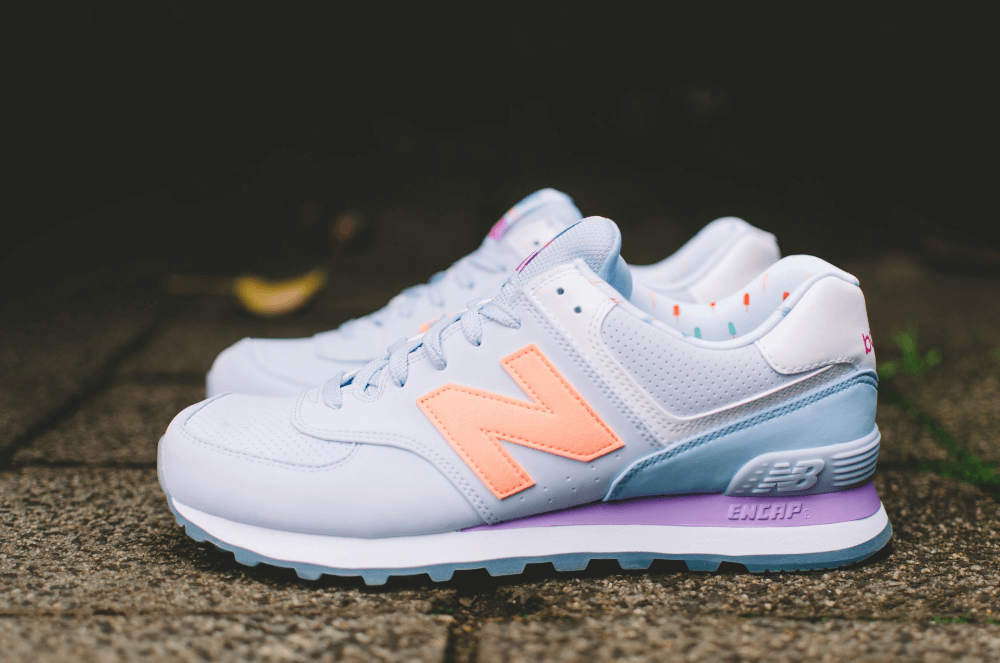📑Table of Contents:
Did you know that a staggering 64% of consumers cite brand recognition as the primary reason for choosing one product over another? This statistic underscores the profound impact that logos have on consumer behavior, particularly in the competitive world of footwear. From the iconic Nike Swoosh to the timeless Adidas Three Stripes, shoe logos play a pivotal role in shaping brand identity, fostering consumer loyalty, and influencing purchasing decisions.
In the fiercely competitive shoe industry, brands constantly seek ways to stand out and connect with consumers. At the heart of this battle for recognition lies the power of branding, with shoe logos serving as pivotal touchpoints. These symbols do more than identity; they encapsulate a brand’s essence, values, and promise, forging a deep connection with the consumer.

The Psychology of Shoe Logos
Understanding the psychological impact of logos reveals much about consumer behavior. A well-designed logo goes beyond aesthetic appeal, invoking emotional responses influencing consumer perception and loyalty. For instance, the sight of a logo can evoke feelings of aspiration, achievement, or nostalgia, driving brand loyalty and, ultimately, purchasing decisions.
Moreover, shoe logos often tap into deeper psychological cues that resonate with consumers on a subconscious level. For example, the Nike Swoosh embodies concepts of movement, speed, and victory. This not only aligns with the brand’s athletic ethos but also evoke feelings of empowerment and motivation in consumers. Similarly, the Adidas Three Stripes symbolize strength, unity, and performance, appealing to athletes and casual wearers alike by tapping into themes of determination and excellence.
Additionally, the colors, shapes, and typography used in shoe logos play a crucial role in shaping consumer perceptions and emotions. Bold colors like red and black convey energy and power. On the other hand, softer hues like blue and green evoke feelings of calmness and trust. Likewise, sleek, modern typography communicates sophistication and innovation, while playful, handwritten fonts evoke a sense of youthfulness and creativity.
Iconic Shoe Logos and Their Stories
Let’s delve into the stories of iconic shoe logos:
Nike Swoosh
The Nike Swoosh logo has a fascinating origin story that dates back to 1971 when Nike co-founder Phil Knight commissioned graphic designer Carolyn Davidson to create a logo for the newly established athletic footwear company. Davidson, a student at Portland State University at the time, crafted the iconic Swoosh design, inspired by the wing of the Greek goddess Nike, who personified victory. Knight was initially hesitant about the design but ultimately chose the Swoosh, impressed by its simplicity and dynamism. Davidson was paid a modest fee of $35 for her work, but her creation would go on to become one of the most recognizable logos in the world.
The Nike Swoosh logo is rich in symbolism, representing movement, speed, and the spirit of victory. The Swoosh’s fluid and swooping design evokes a sense of motion and energy, reflecting Nike’s ethos of athleticism, performance, and determination. Additionally, the Swoosh is reminiscent of the wing of the Greek goddess Nike, symbolizing triumph and success. By incorporating elements of classical mythology into its branding, Nike reinforces its commitment to excellence and achievement, inspiring athletes and enthusiasts around the world to push beyond their limits and pursue their goals with passion and dedication.
Over the years, the Nike Swoosh logo has undergone subtle refinements but has remained largely unchanged since its inception. Its enduring impact on Nike’s brand identity is a testament to its timeless design and universal appeal. The Swoosh symbolizes Nike’s innovation, quality, and performance across various products. It inspires athletes to greatness. Nike’s evolution reinforces the Swoosh as a symbol of victory and excellence.
Adidas Three Stripes
The Adidas Three Stripes logo has its roots in the early 1960s when it made its debut as a distinctive branding element on Adidas footwear. The logo was created as a visual representation of the brand’s commitment to performance, innovation, and excellence in sportswear. Designed by Adidas founder Adi Dassler, the Three Stripes logo quickly became synonymous with the brand’s identity and remains an enduring symbol of Adidas to this day.
The Three Stripes logo holds deep symbolism, with each stripe representing one of the three sons of Adidas founder Adi Dassler: Adolf (Adi), Rudolf, and Horst Dassler. This familial connection underscores the brand’s heritage and legacy, highlighting the Dassler family’s dedication to craftsmanship, quality, and innovation in athletic footwear. Beyond its familial significance, the Three Stripes also symbolize the brand’s commitment to performance and excellence, serving as a visual reminder of Adidas’s unwavering pursuit of athletic achievement and success.
The Adidas Three Stripes logo has had a profound cultural impact, transcending its origins in sports to become a globally recognized symbol of style, athleticism, and streetwear culture. From the courts to the streets, the Three Stripes logo has been embraced by athletes, fashion enthusiasts, and sneakerheads alike, cementing its status as an iconic emblem of urban cool. The logo’s association with sports and athleticism has made it a staple in the world of activewear and athletic footwear, while its influence on streetwear and fashion has led to collaborations with high-end designers and celebrities, further solidifying its cultural relevance and appeal.
Puma’s Leaping Cat
The iconic Puma logo featuring a leaping cat has a storied history dating back to the founding of the brand in 1948 by Rudolf Dassler. Inspired by the sleek and agile nature of the puma, a powerful and graceful big cat known for its speed and agility, Rudolf Dassler chose the leaping cat as the emblem of his new sportswear company. The logo made its debut on Puma footwear, symbolizing the brand’s commitment to performance, innovation, and athletic excellence.
The leaping cat logo holds profound symbolism, embodying the attributes of speed, agility, and grace that are synonymous with the puma. By associating the brand with the characteristics of this formidable feline, Puma emphasizes its dedication to athleticism, performance, and competitive spirit. The sleek and dynamic silhouette of the leaping cat conveys a sense of movement and power, reflecting Puma’s focus on providing athletes and enthusiasts with footwear and apparel that empower them to perform at their best.
Over the decades, Puma’s leaping cat logo has become an iconic symbol of style, athleticism, and urban cool. With its sleek and recognizable design, the logo has adorned everything from running shoes and soccer cleats to streetwear and fashion accessories, making it a ubiquitous presence in sports and lifestyle culture. The leaping cat logo’s association with speed and performance has made it a favorite among athletes and sports enthusiasts, while its influence on streetwear and fashion has led to collaborations with designers, musicians, and celebrities, further solidifying its cultural significance and appeal.
Design Principles Behind Effective Shoe Logos
Creating an effective shoe logo demands more than artistic skill; it requires a deep understanding of design principles. The most impactful logos often share common features:
- Simplicity: A simple design ensures easy recognition and recall. It stands out in a crowded marketplace, making the brand instantly identifiable.
- Color Psychology: Colors play a crucial role in conveying a brand’s message and emotions. For example, red can evoke passion and energy, while blue may symbolize trust and dependability.
- Symbolism: Effective logos use symbolism to convey the brand’s story or values at a glance. This deepens the logo’s impact, making it more memorable to the consumer.
Aligning the logo with the brand’s identity is crucial. The logo should reflect the brand’s essence, whether luxury, performance, innovation, or durability. This alignment ensures that every time consumers see the logo, they instantly connect it with the brand’s core values.
The Evolution of Shoe Logos in the Digital Age
The rise of digital marketing and social media has significantly influenced shoe logo design. Brands now consider how their logos appear on various digital platforms, from websites and online stores to social media profiles and mobile apps. This digital consideration has simplified many logos, making them more versatile and recognizable across different screen sizes and resolutions.
Adidas, for example, has successfully adapted its logo for the digital world. The brand simplified its original trefoil logo to the more streamlined three stripes, ensuring it remains impactful across all digital mediums.
Shoe Logo Design: A Step-by-Step Process
Designing a shoe logo involves a meticulous, creative process:
- Briefing: Understanding the brand’s history, values, and target audience sets the foundation.
- Research: Analyzing competitors and industry trends provides insights into the design direction.
- Conceptualization: Brainstorming sessions lead to the development of several design concepts.
- Refinement: Selecting the most promising concept and refining it based on feedback ensures the final logo aligns with the brand’s identity.
- Finalization: The chosen design is then polished and prepared for various applications, from product designs to marketing materials.
For aspiring designers, the key is to focus on creating logos that are visually appealing and deeply connected to the brand’s identity.
The Impact of Shoe Logos on Consumer Behavior
Shoe logos have a profound impact on consumer behavior. A compelling logo can:
- Drive Recognition: In a saturated market, a distinctive logo helps brands stand out, making it easier for consumers to recognize and choose their products.
- Build Trust: A consistent and familiar logo builds consumer trust over time, crucial for long-term brand loyalty.
- Influence Perceptions: Logos can influence how consumers perceive the brand, from its quality and reliability to its status and appeal.
Ultimately, the effectiveness of a shoe logo in driving consumer behavior hinges on its ability to resonate emotionally with its audience, fostering a sense of identity and belonging.

Conclusion
Shoe logos are much more than mere marks of identification; they are vital tools in building and maintaining brand identity, influencing consumer behavior, and navigating the competitive landscape of the shoe industry. As we look to the future, the evolution of shoe logos will likely continue, with brands seeking innovative ways to connect with consumers in an increasingly digital world.
However, the principles of effective logo design—simplicity, color psychology, and deep brand alignment—will remain timeless, guiding brands to create symbols that resonate deeply with consumers.
Besides, choosing the right name for your food truck is crucial in defining your brand and attracting customers. A great name should be memorable, reflect your culinary style, and resonate with your target audience. For comprehensive guidance on selecting a name that sets you apart in a bustling market, check out our insights on picking a perfect food truck name.
By understanding the stories, psychology, and design principles behind iconic shoe logos, brands and designers can craft logos that stand out visually and embody the brand’s essence, ensuring a lasting impact in consumers’ hearts and minds.





